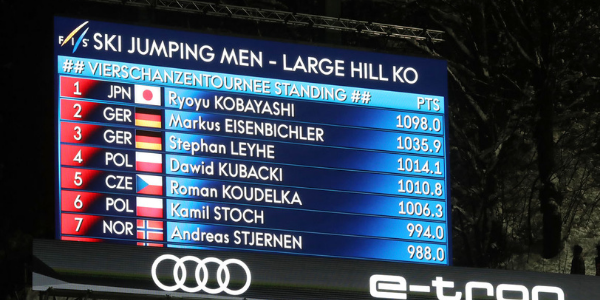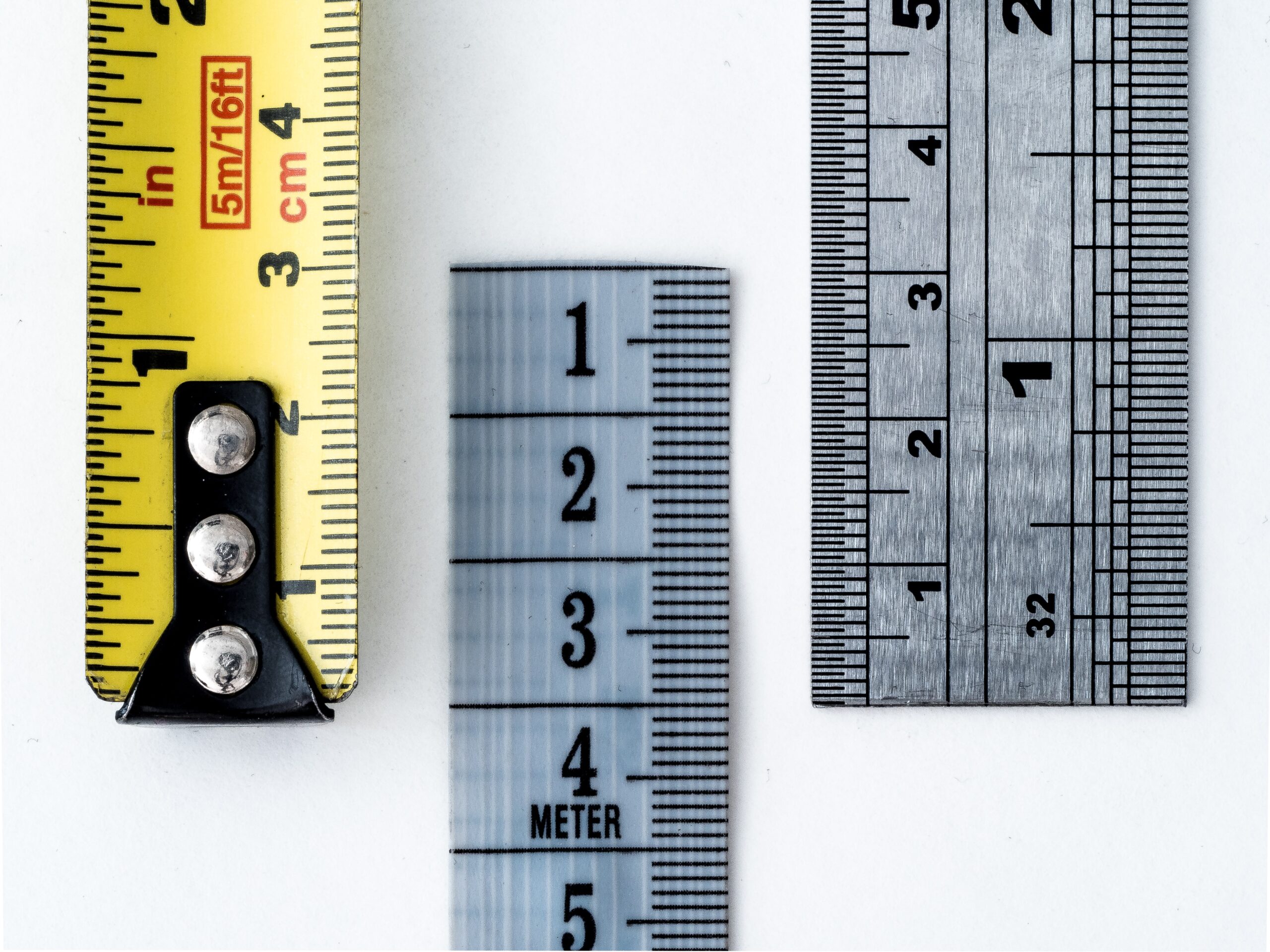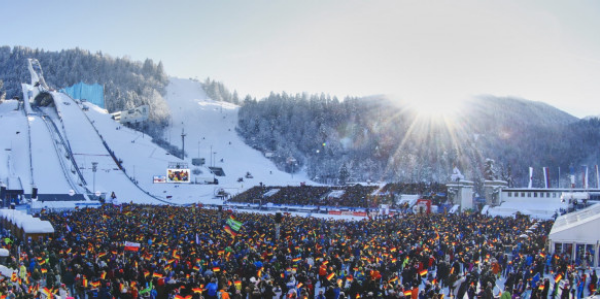How Is Ski Jumping Scored?
by Frank V. Persall
In the winter Olympics and at various other ski jumping competitions, participants come flying down the ramp to make the longest and most impressive ski jump that they can. These jumps are scored but if you’ve never indulged in the sport before, you may be asking how is ski jumping scored?
A ski jumper is observed by five judges, each of whom will give style points based on several factors including the flight, the landing, and the outrun.
However, the ski jump points system is a little more complicated and while a perfect score of 20 style points from each of the five judges is attainable, there may be a chance that points are deducted. In this guide to ski jumping, we will be looking at how ski jumpers distance is measured, how the points are calculated as well as a variety of ski jumping competitions around the world.
Contents

How Is Ski Jumping Scored?

Ski jumping takes place on a slope that is made up of a ramp, a take-off table from which the ski jumper takes flight, and a landing hill. There are various hill heights depending on the experience of the ski jumper and these range from 50m to 185m.
The participant performs their ski jump and this is presided over by a set of judges who award points based on various aspects of the jump. Primarily, the skier will be given points depending on the size of the hill, typically, there will be a large hill and a regular hill and each of these will have what is known as a K-point which is set at 90m and 120m respectively.
There are points in relation to distance, but we will look at this in a little more detail later on. For now, let’s take a look at the style points system.
The ski jump competitor may be awarded style points based on their flight, how they land and their outrun. The maximum number of points that can be given by any one of the judges is 20. If a judge does not feel that 20 points have been earned, they may deduct up to five points and this can be done in halves. For example, a judge could award 16.5 points. The only time that this rule changes slightly is when it comes to awarding points for the outrun, in which case, the judges are at liberty to deduct as many as seven points.
When judging a ski jump, judges are typically looking for the following things:
- A smooth flight where the skier remains in control and his or her skis do not flay out at the front.
- When the skier lands, they must land in a telemark position with one foot before the other. Again, the skier must be stable on their feet.
- As the skier completes the final part of the jump, the outrun, they are expected to ski in a straight line to a point which is marked with a green line that signals the end of the jump.
How Do They Measure The Ski Jumping Distance
One of the key parts of understanding ski jumping is getting to grips with how the distance is measured. The hills that are used in a ski jumping competition are not measured based on their actual size but rather according to their K-point.
The K-point is the point where the landing area starts to flatten. If the skier is jumping on a normal hill then the K point will be measured at 90 metres whereas a large hill has a K-point of 120 metres. But how does this relate to scoring?

In short, if the skier is able to land their jump directly onto the K-point, they automatically obtain a further 60 points. So, you can see, landing in this zone could be the difference between winning and losing a competition.
However, the measuring system doesn’t end there. If the competitor lands beyond the K-point then he or she will be awarded additional points. These points are awarded in relation to the distance that they travel and depending on the hill, these points may vary.
For example, when performing ski jumps on a large hill, the skier will be awarded 1.8 points per additional metre, on a small hill, they will accumulate 2 points per additional metre and when performing on a ski flying hill, they stand to earn another 1.2 points for every additional metre they travel.
Calculation Line In Ski Jumping
You may hear the term calculation line being used when looking at ski jumping point systems. This is the official name given to the K-point that we have already discussed. In addition to this name, the calculation line may also be called the K-spot. In any case, these names all refer to the point on the jump which indicates the steepest point.
Ski Jump Competitions

Did you know that the world record for ski jumping was made in 2017 and was an incredible 253.5 metres. This jump was made by a guy named Stefan Kraft at the Vikersund hill in Norway. This is one of the biggest ski jumpers hills in the world and regularly plays host to the Continental cup.
However, this is by no means the only ski jumping competition in the world. Since this is such a popular activity, you can travel the globe attending ski jump competitions and never see the same thing twice.
Of course, there is the coveted ski jump world cup which takes place across four hills. There are four traditional locations including Oberstdorf, Innsbruck, Garmisch-Partenkirchen and Bischofshofen.
Furthermore, ski jumping is a regular event at the Winter Olympic games and has been since the competition first began back in 1924. While this was traditionally a single competitor event, in 1988 a team ski jump event was added and remains to this day.
Other notable ski jumping competitions that take place around the world include:
- Hills Tournament
- World Ski Champions
- The Raw Air Tournament
- Russia Bluebird Tournament
- Hinterzarten
Summary
Ski jumping is a popular winter event and enjoyed by many people around the world. The points system is based both on distance and style and 5 judges make up a panel that awards points.
In the words of Buzz Lightyear, "This isn't flying, it's falling with style"
If you’re a ski enthusiast that’s looking for their next adventure, then you may have decided that trying out a ski jump is your next challenge. But before you pack up and head off to the mountainside, we’d urge you to check out some of our top skiing posts to give you the best advantage.
Related Posts:
 |
 |
 |
 |

About Frank V. Persall
Frank is originally from the UK, but he has a passion for skiing that knows no bounds. He has made it his life's mission to visit the best ski resorts across the USA and the World. Frank loves spending time with his wife and three children on ski slopes, as they all share his love for the activity.
Thoughts on "How Is Ski Jumping Scored?"
 |
 |
 |
 |
You can get FREE Gifts. Or latest free skiing books here.
Disable Ad block to reveal all the info. Once done, hit a button below
 |
 |
 |
 |